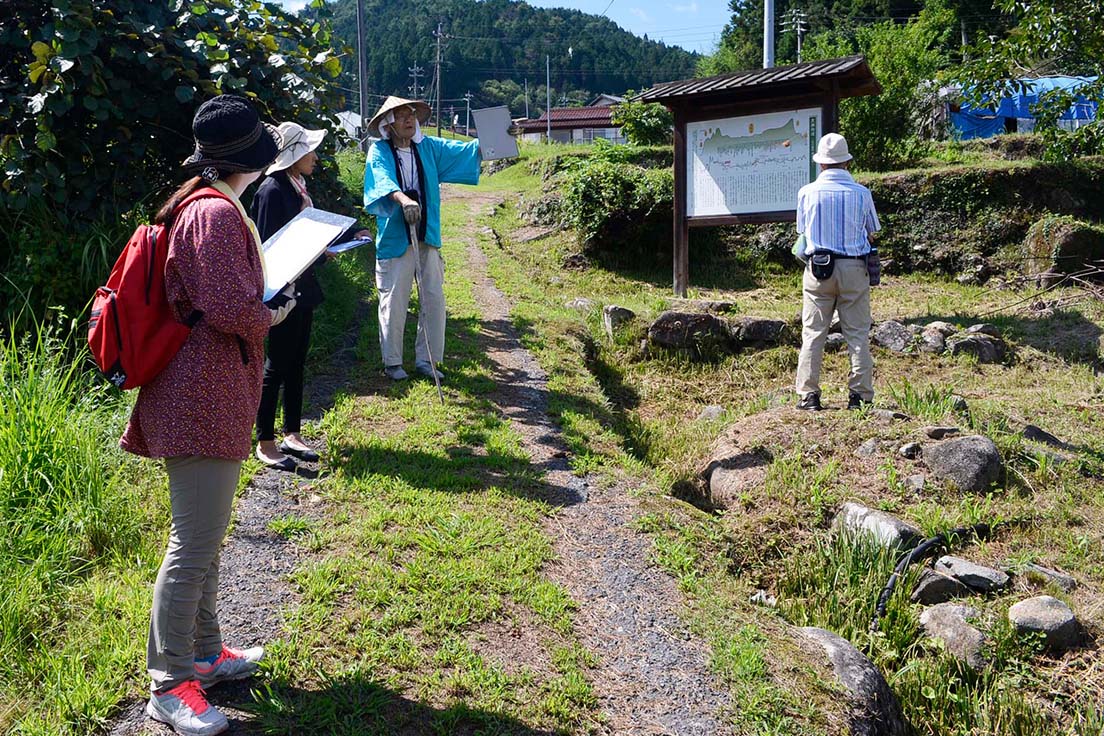
Kurose-kaido Road
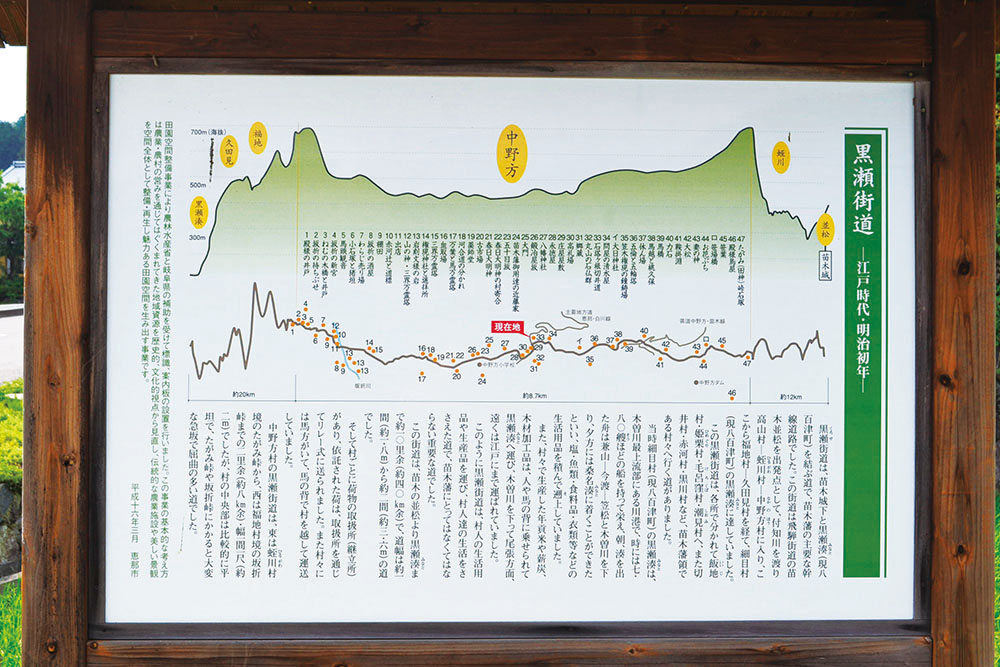 This is an old road that passed through the Sakaori terraced rice field area, In the old days (from the 1600s), people used this road to carry goods. It was an important trunk road between nearby Yaotsu town and Naegi town (now in Nakatsugawa city).
This is an old road that passed through the Sakaori terraced rice field area, In the old days (from the 1600s), people used this road to carry goods. It was an important trunk road between nearby Yaotsu town and Naegi town (now in Nakatsugawa city).
Water mill – showing the agricultural heritage of Japan
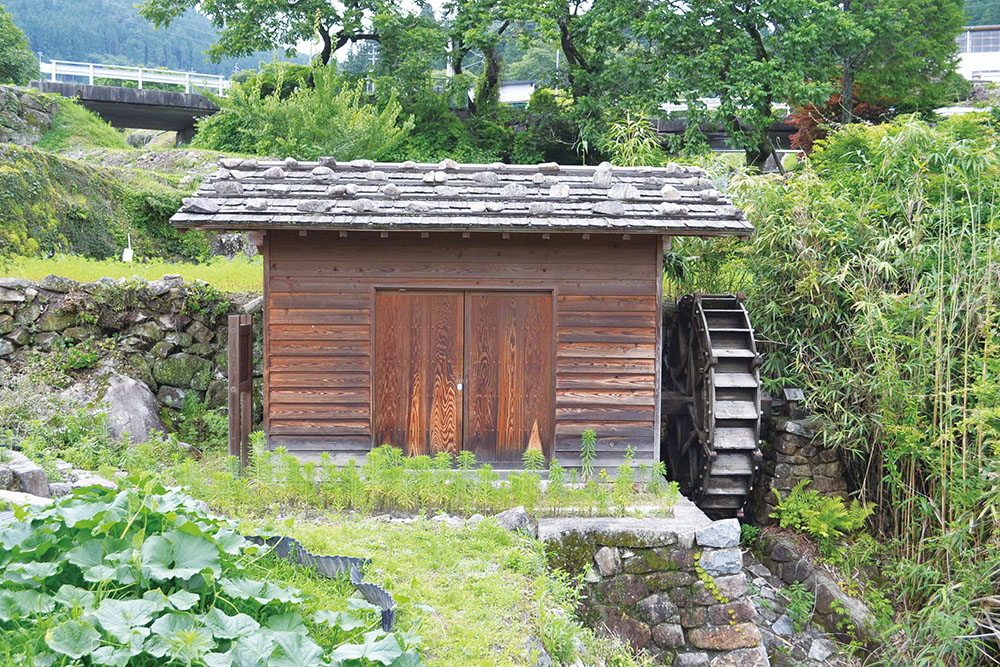 Originally, there were watermills at six different locations along the Sakaori river. They were used for the milling of rice. This all changed due to modernization and economic changes in 1961. The one remaining water mill was restored to show the traditional method of rice milling.
Originally, there were watermills at six different locations along the Sakaori river. They were used for the milling of rice. This all changed due to modernization and economic changes in 1961. The one remaining water mill was restored to show the traditional method of rice milling.
Ta no kamisama– the local Shinto deity who protects the rice fields
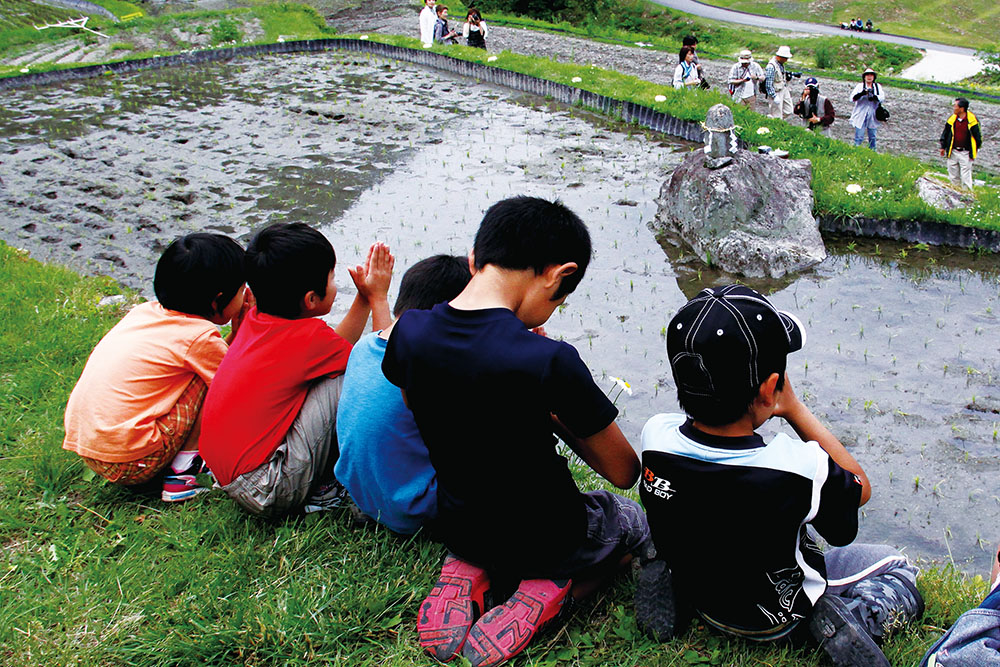 The “Ta no kamisama” – or God of the rice fields – is situated in the middle of the Sakaori terraced rice fields. A triangular-shaped stone has been placed on a naturally-occurring rock. The “Ta no kamisama” protects the rice fields.
The “Ta no kamisama” – or God of the rice fields – is situated in the middle of the Sakaori terraced rice fields. A triangular-shaped stone has been placed on a naturally-occurring rock. The “Ta no kamisama” protects the rice fields.
Haijoketsu – the rock to pray for rain
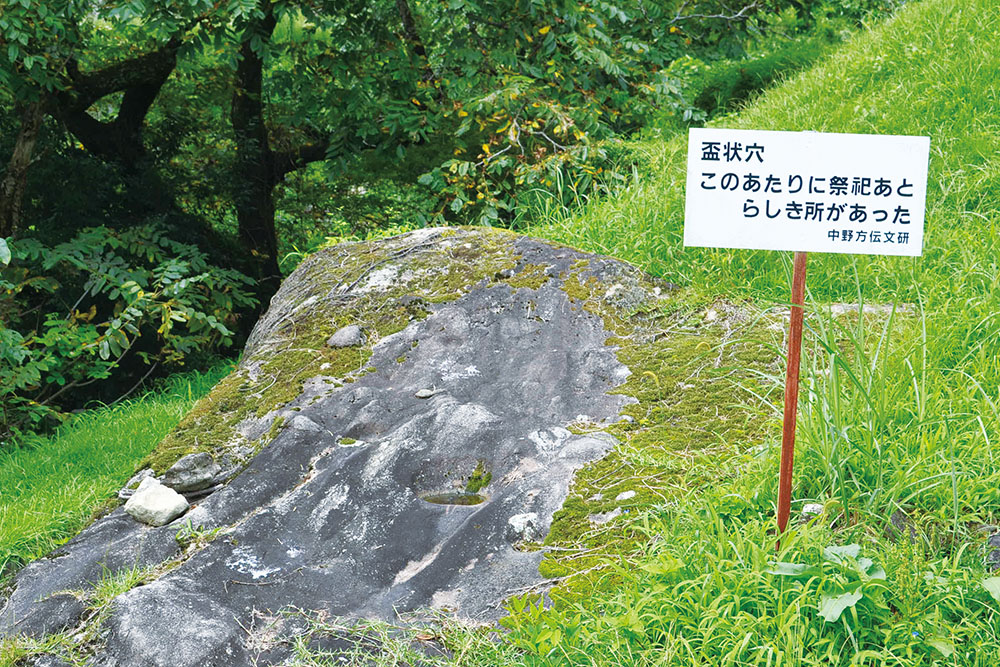 This large rock has many indents in its surface. Long ago, people would pour water in to these indents and pray for rain.
This large rock has many indents in its surface. Long ago, people would pour water in to these indents and pray for rain.
Shitagongen shrine
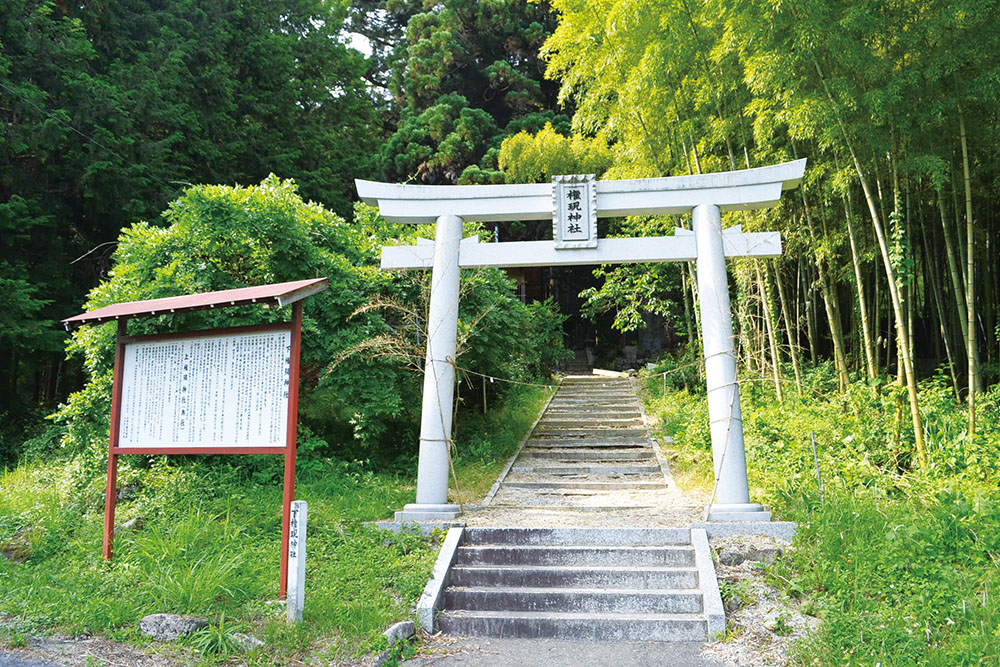 This shrine is located at the foot of Mount Gongen and has been a place of worship for the people of the region since the Edo period (1600s). The shrine is surrounded by many huge trees. The big cedar tree is called “Gongen Oosugi” (Giant Gongen Cedar tree) by many people.
This shrine is located at the foot of Mount Gongen and has been a place of worship for the people of the region since the Edo period (1600s). The shrine is surrounded by many huge trees. The big cedar tree is called “Gongen Oosugi” (Giant Gongen Cedar tree) by many people.
Uegongen shrine
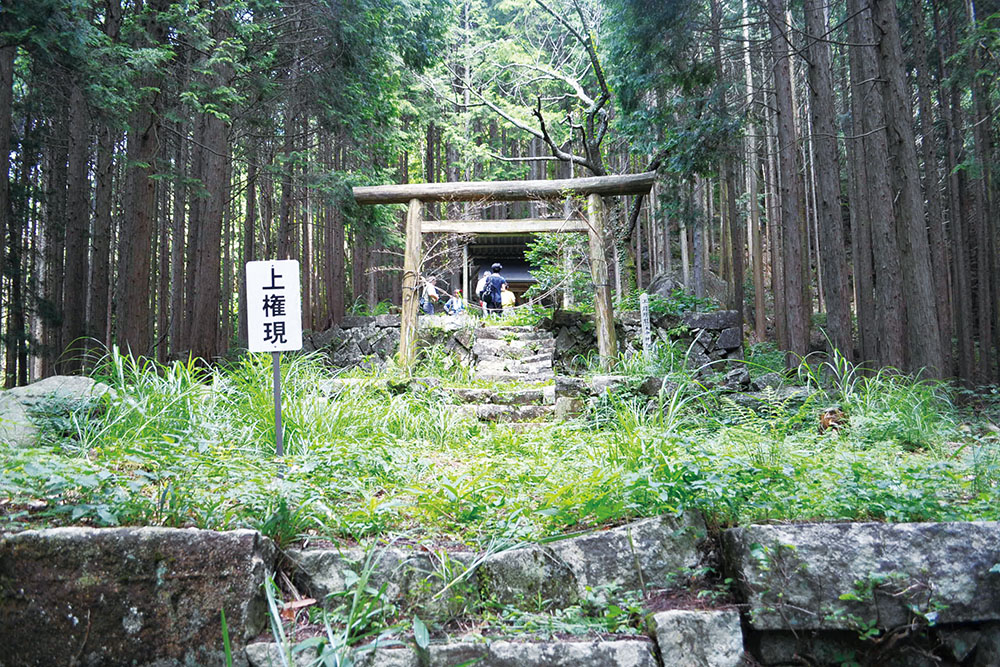 This shrine is located near to the top of Mount Gongen. There is a huge stone called “Yamabushiiwa” near this shrine. From here, you can see the whole area of the Sakaori terraced rice fields.
This shrine is located near to the top of Mount Gongen. There is a huge stone called “Yamabushiiwa” near this shrine. From here, you can see the whole area of the Sakaori terraced rice fields.




